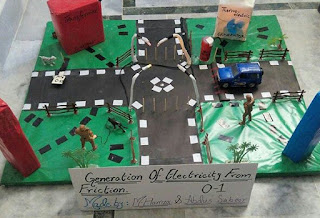An illusion mirror is a pair of mirrors, one fully reflective and the other a one-way mirror, set up so that the fully reflective mirror reflects an image back into the one-way mirror, in a recursive manner, creating a series of smaller and smaller reflections that appear to recede into an infinite distance. They are used as room accents and in artwork.This effect is also seen when a subject stands between two fully reflective mirrors, as in a changing room or house of mirrors.
In a classic self-contained infinity mirror, a set of light bulbs, LEDs, or other point-source lights are placed at the periphery of a fully reflective mirror, and a second, partially reflective one-way mirror, is placed a short distance in front of it. When an observer looks into the surface of the partially reflective mirror, the lights appear to recede into infinity, creating the appearance of a tunnel of lights of great depth.
The reflections recede into the distance is that the light actually is traversing the distance it appears to be traveling. In a two-centimeter thick infinity mirror, with the light sources halfway between, light from the source only travels that one centermeter. The first reflection travels one centimeter to the rear mirror and then two centimeters to, and through the front mirror, a total of three centimeters. The second reflection travels two centimeters from front mirror to back mirror, and again two centimeters from the back mirror to, and through the front mirror, totaling four centimeters, plus the first reflection (three centimeters) making the second reflection seven centimeters away from the front mirror. Each successive reflection adds four more centimeters to the total (the third reflection appears 11 centimeters deep, fourth 15 centimeters deep, and so on).
The multiply-reflected light follows a folded path which is much deeper than the arrangement of mirrors. In theory, such a surface is infinite in area, but encloses a finite volume.
TUTORIAL LINK: https://m.youtube.com/watch?v=b2bvWArORSc
TUTORIAL LINK: https://m.youtube.com/watch?v=b2bvWArORSc


















